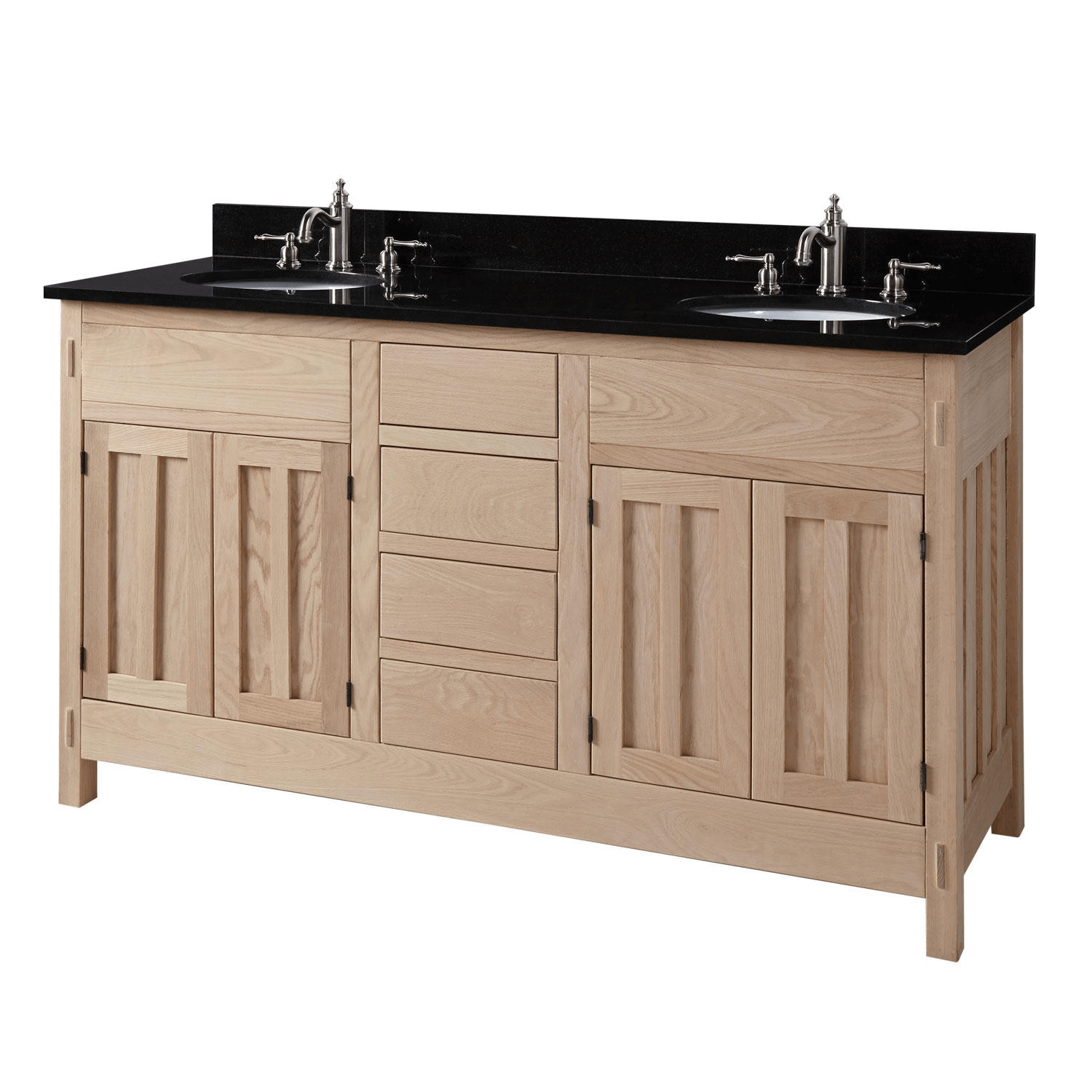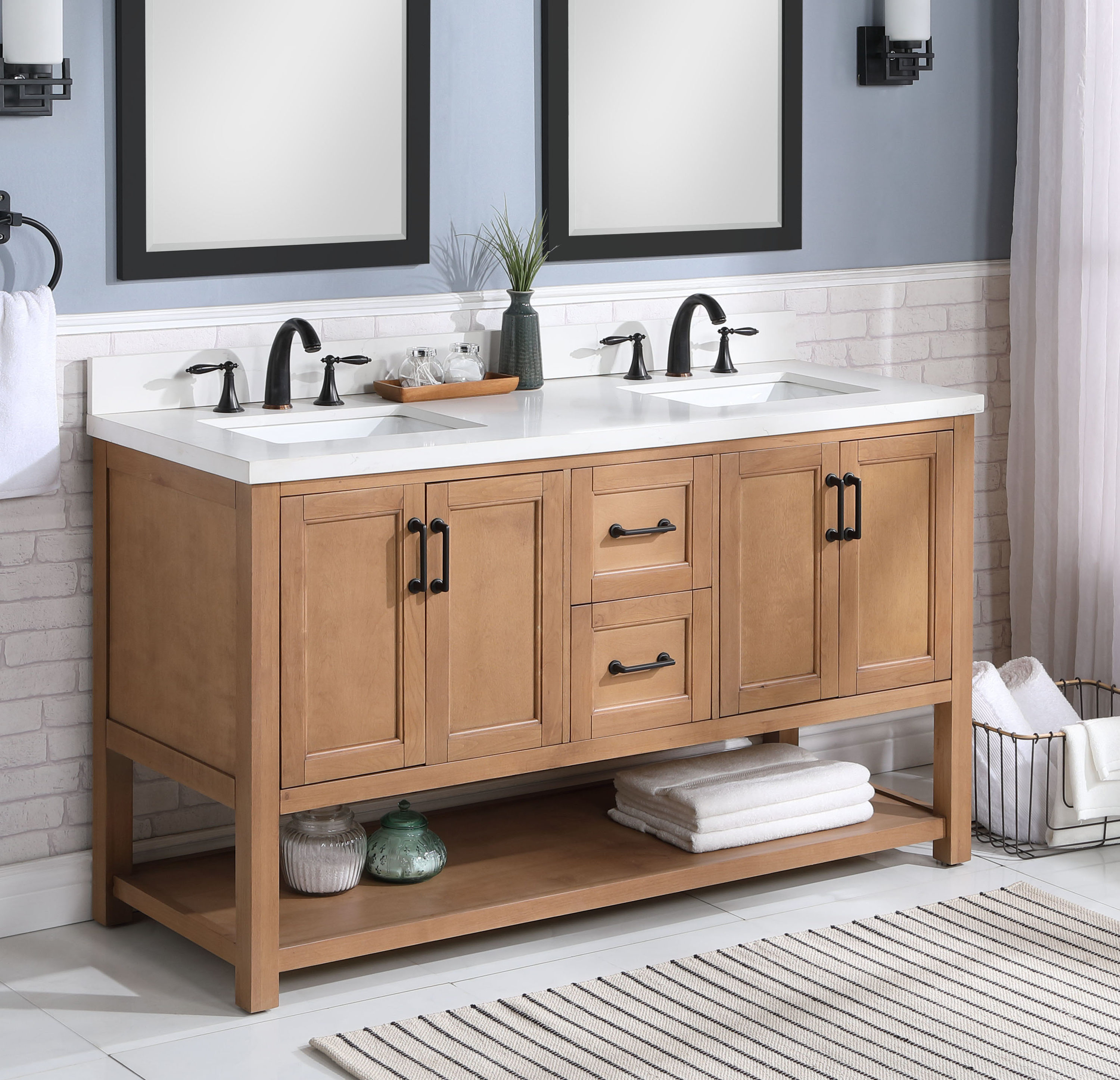Unfinished Bathroom Vanities at Lowe’s
Embarking on a bathroom renovation project can be an exciting journey, and choosing the right vanity is a crucial step. Lowe’s offers a wide selection of unfinished bathroom vanities, presenting a unique opportunity to personalize your space and achieve a truly customized look. These vanities provide a blank canvas, allowing you to express your design vision and create a bathroom that reflects your individual style.
Benefits of Unfinished Bathroom Vanities
Purchasing unfinished bathroom vanities from Lowe’s offers several advantages. First, you have the freedom to choose the perfect finish for your bathroom. Whether you prefer a classic white, a bold color, or a natural wood stain, you can customize the vanity to perfectly complement your existing décor. Second, unfinished vanities are often more affordable than pre-finished options. This allows you to allocate your budget to other important elements of your bathroom renovation. Third, unfinished vanities allow you to create a truly unique piece that reflects your personal style. You can choose from a variety of paint techniques, distressing methods, and hardware options to make your vanity stand out.
Types of Unfinished Bathroom Vanities
Lowe’s offers a variety of unfinished bathroom vanities to suit different styles and needs. The most common types include:
- Traditional Vanities: These vanities feature classic designs with intricate details, often made from solid wood. They are perfect for creating a timeless and elegant bathroom.
- Modern Vanities: These vanities boast sleek and minimalist designs, often made from materials like MDF or plywood. They are ideal for contemporary bathrooms with clean lines and a modern aesthetic.
- Rustic Vanities: These vanities embrace a natural and organic look, often featuring reclaimed wood or distressed finishes. They are perfect for creating a cozy and inviting atmosphere in your bathroom.
Materials Used in Unfinished Bathroom Vanities
Unfinished bathroom vanities are typically made from a variety of materials, each with its own unique characteristics and benefits. Common materials include:
- Solid Wood: Solid wood vanities are known for their durability, natural beauty, and timeless appeal. Popular wood species include oak, maple, cherry, and walnut.
- MDF (Medium-Density Fiberboard): MDF is an engineered wood product made from wood fibers that are bonded together with resin. It is a cost-effective option that offers good stability and moisture resistance.
- Plywood: Plywood is another engineered wood product made from thin layers of wood veneer that are glued together with alternating grain directions. It is known for its strength, stability, and affordability.
Factors to Consider When Choosing an Unfinished Bathroom Vanity: Unfinished Bathroom Vanities Lowe’s

Choosing an unfinished bathroom vanity can be a great way to personalize your bathroom and save money. However, there are several factors to consider before making your purchase.
Vanity Style, Unfinished bathroom vanities lowe’s
The style of your vanity will greatly impact the overall look and feel of your bathroom. Some popular styles include traditional, modern, contemporary, and farmhouse.
- Traditional vanities often feature ornate details, such as carvings and raised panels. They are typically made from wood like oak or cherry and often have a warm, inviting feel.
- Modern vanities are known for their sleek lines and minimalist designs. They are often made from materials like metal or glass and may feature bold colors or geometric patterns.
- Contemporary vanities share some similarities with modern vanities but may incorporate more natural elements, such as wood or stone. They are typically characterized by their clean lines and simple designs.
- Farmhouse vanities are inspired by rustic, country style. They often feature distressed wood, metal accents, and a vintage feel.
When choosing a style, consider the overall design of your bathroom and your personal preferences.
Vanity Size and Layout
The size of your bathroom and the layout of your vanity will determine how much space you have to work with.
- Small bathrooms may require a smaller vanity with a single sink.
- Larger bathrooms can accommodate a larger vanity with double sinks or even a separate vanity for each person.
You should also consider the layout of your bathroom. If you have a limited amount of space, you may want to choose a vanity with a smaller footprint or one that can be placed against a wall.
Vanity Material
Unfinished vanities are typically made from wood, but other materials like MDF (medium-density fiberboard) or plywood are also available.
- Wood vanities are durable and can be stained or painted to match your décor. They are also more expensive than other materials.
- MDF is a less expensive alternative to wood. It is often used in vanities that are going to be painted because it provides a smooth, even surface.
- Plywood is a strong and durable material that is often used in vanities that will be exposed to moisture.
Vanity Features
Unfinished vanities can come with a variety of features, such as drawers, shelves, and doors.
- Drawers provide storage for toiletries and other bathroom essentials.
- Shelves can be used to display decorative items or store towels.
- Doors can be used to hide clutter and create a more organized look.
The features you choose will depend on your individual needs and preferences.
Vanity Countertop
The countertop is an important part of the vanity, as it will be the focal point of your bathroom.
- Granite is a durable and stylish option that comes in a wide range of colors and patterns.
- Marble is another popular choice that is known for its elegance and beauty. It is, however, more porous than granite and requires more maintenance.
- Quartz is a man-made material that is very durable and stain-resistant. It is also available in a variety of colors and patterns.
- Laminate is a budget-friendly option that is available in a variety of styles and colors.
Consider your budget, style, and maintenance requirements when choosing a countertop material.
Vanity Sink
The sink is another important part of the vanity.
- Undermount sinks are mounted beneath the countertop, which creates a seamless look.
- Drop-in sinks are placed on top of the countertop and are typically less expensive than undermount sinks.
- Vessel sinks are freestanding sinks that sit on top of the countertop. They are a stylish option but can be more difficult to clean.
The type of sink you choose will depend on your personal preferences and the style of your vanity.
DIY Guide to Finishing an Unfinished Bathroom Vanity

Finishing an unfinished bathroom vanity can be a rewarding project, allowing you to customize the look and feel of your bathroom to match your personal style. This guide will provide you with a step-by-step process, essential tools and materials, and helpful tips for achieving a professional finish.
Preparing the Vanity
Before you begin the finishing process, it’s crucial to prepare the vanity surface properly. This involves sanding, cleaning, and priming the wood.
- Sanding: Use sandpaper with different grits (80, 120, and 220) to smooth out any rough edges and imperfections. Start with a coarser grit and progressively move to finer grits for a smoother finish.
- Cleaning: After sanding, thoroughly clean the vanity surface using a damp cloth and mild soap. Allow it to dry completely before proceeding.
- Priming: Apply a quality primer to the vanity. This will help the paint or stain adhere better and create a more even finish.
Choosing the Right Finish
The type of finish you choose will determine the final look of your vanity.
- Paint: Paint offers a wide range of colors and finishes, allowing for endless customization. Choose a paint specifically designed for bathroom use, as it will be more resistant to moisture and mildew.
- Stain: Stain enhances the natural beauty of the wood grain while providing a protective layer. Consider the color and tone of the stain to complement the overall bathroom design.
- Polyurethane: A clear, protective coating that adds durability and shine to the finish. Choose a polyurethane formulated for interior use and apply multiple thin coats for optimal protection.
Applying the Finish
- Painting: Use a high-quality paintbrush or roller for a smooth and even application. Apply thin coats, allowing each coat to dry completely before applying the next. For a professional look, consider using painter’s tape to protect surrounding areas.
- Staining: Apply the stain with a brush or cloth, working with the grain of the wood. Wipe off any excess stain after a few minutes to prevent uneven color. Apply multiple coats for deeper color and protection.
- Polyurethane: Apply polyurethane with a brush or roller, ensuring even coverage. Allow each coat to dry completely before applying the next. Apply multiple thin coats for maximum protection.
Finishing Touches
Once the finish has dried completely, you can add finishing touches to enhance the vanity’s appearance.
- Hardware: Install new cabinet knobs or pulls to complement the vanity’s finish and style. Consider using hardware that is resistant to moisture and corrosion.
- Countertop: If the vanity comes without a countertop, you can install one to complete the look. Choose a countertop material that is durable, water-resistant, and complements the vanity’s finish.
- Lighting: Install lighting fixtures above or around the vanity to enhance its appearance and provide adequate illumination for grooming tasks.
Essential Tools and Materials
- Sandpaper (various grits)
- Paintbrush or roller
- Painter’s tape
- Drop cloths
- Primer
- Paint or stain
- Polyurethane
- Cleaning cloths
- Safety glasses
- Gloves
- Cabinet knobs or pulls
- Countertop (optional)
- Lighting fixtures (optional)
Tips and Techniques for a Professional Finish
- Use a quality paintbrush or roller for a smooth and even application.
- Apply thin coats of paint, stain, or polyurethane, allowing each coat to dry completely before applying the next.
- Sand lightly between coats to create a smoother finish.
- Use painter’s tape to protect surrounding areas from spills or overspray.
- Work in a well-ventilated area and wear safety glasses and gloves.
- Clean up any spills or drips immediately to prevent staining.
